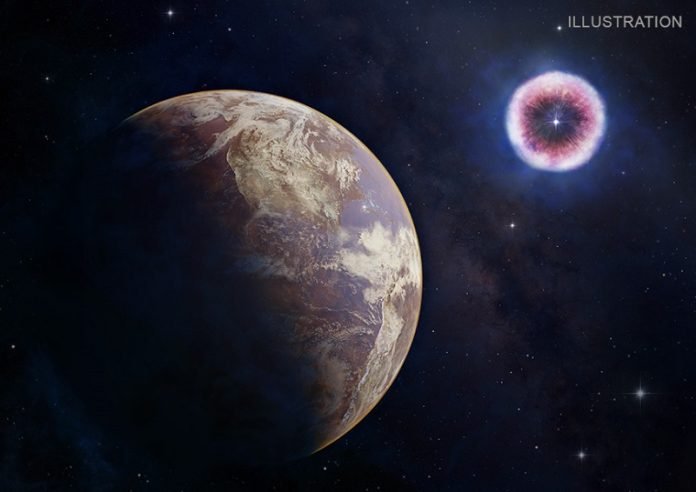
NASA’s Chandra X-ray Observatory has found that a phase of intense X-rays from an exploded star can pose a greater risk to planets in its vicinity than previously thought.
The intense X-rays can damage the atmospheres of planets up to 160 light-years away.
Most research on the effects of supernova explosions had focused on two periods: the intense radiation produced by a supernova in the days and months after the explosion and the energetic particles that arrive hundreds to thousands of years afterward.
However, researchers have now discovered that between these two previously identified dangers lurks another.
The aftermath of supernovae always produces X-rays, but if the supernova’s blast wave strikes dense surrounding gas, it can produce a particularly large dose of X-rays that arrives months to years after the explosion and may last for decades.
The calculations in this latest study are based on X-ray observations of 31 supernovae and their aftermath obtained mostly from Chandra, NASA’s Swift and NuSTAR missions, and the European Space Agency’s XMM-Newton mission.
The analysis of these observations shows that supernovae interacting with their surroundings can have lethal consequences for planets located up to about 160 light-years away.
Earth is not in danger of such a threat today because there are no potential supernova progenitors within this distance, but it may have experienced this kind of X-ray exposure in the past.
“If a torrent of X-rays sweeps over a nearby planet, the radiation would severely alter the planet’s atmospheric chemistry,” said Ian Brunton, a former Illinois undergraduate now at NASA Johnson Space Flight Center and the first author of the study.
“For an Earth-like planet, this process could wipe out a significant portion of ozone, which ultimately protects life from the dangerous ultraviolet radiation of its host star.”
If a planet with Earth’s biology were hit with sustained high-energy radiation from a nearby supernova, especially one strongly interacting with its surroundings, it could lead to the demise of a wide range of organisms, especially in marine environments at the foundation of the food chain.
These effects may be significant enough to initiate a mass extinction event.
The study reports that although the Earth and the solar system are currently in a safe space in terms of potential supernova explosions, many other planets in the Milky Way are not.
These high-energy events would effectively shrink the areas within the Milky Way galaxy, known as the Galactic Habitable Zone, where conditions would be conducive for life.
Further research on X-rays from supernovae is valuable not just for understanding the life cycle of stars, but also has implications for fields like astrobiology, paleontology and the earth and planetary sciences.



